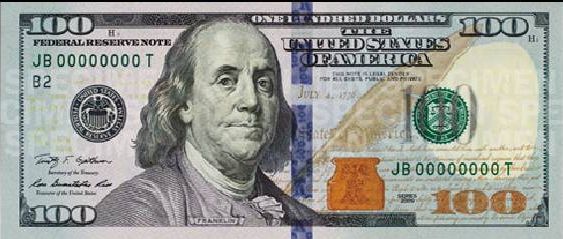U.S. Treasury Jumps on 3-D Bandwagon, Unveils Redesigned Benjamins
Fun 3-D holograms give Mr. Ben Franklin a facelift for the new decade.

A running battle between the U.S. Treasury and the counterfeiting efforts of drug lords and North Korea just got even more high-tech, with 3-D interactivity. Now everyone can check the authenticity of their Benjamins, courtesy of color-changing and moving images of bells and numbers.
The first new security component comes from a 3-D security ribbon on the front of the new $100, which contains the previously-mentioned images of bells and numeral 100s that move as the bill gets tilted from side to side. A second new feature known as the “Bell in the Inkwell” makes a bell change color from copper to green based on its tilt. That makes it seem to disappear at times within the copper inkwell.
Those join previously existing security measures, such as the portrait watermark of Benjamin Franklin, the security thread, and the color-shifting numeral 100.
“The advanced security features we’ve included in the new $100 note will thwart potential counterfeiters from producing high-quality fakes that can fool consumers and merchants,” said Larry Felix, director of the Treasury’s Bureau of Engraving and Printing. “Protect yourself — it only takes a few seconds to check the new $100 note and know it’s real.”
We previously took a tour of the old $100 bill’s flaws, and examined the counterfeiting problem facing the U.S. Treasury. There’s about $70 million worth of fake U.S. currency out and about at any given time, 75 percent of which is in $100 bills. Let’s hope Ben’s facelift can do something about that.
For more interactive fun, check out NewMoney.gov here.

Benjamin’s Back